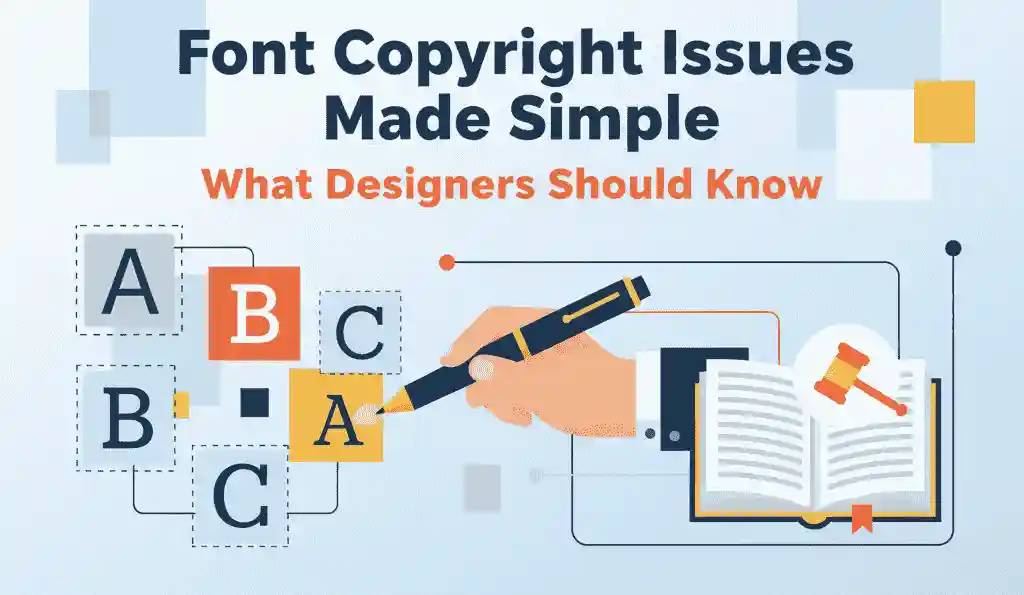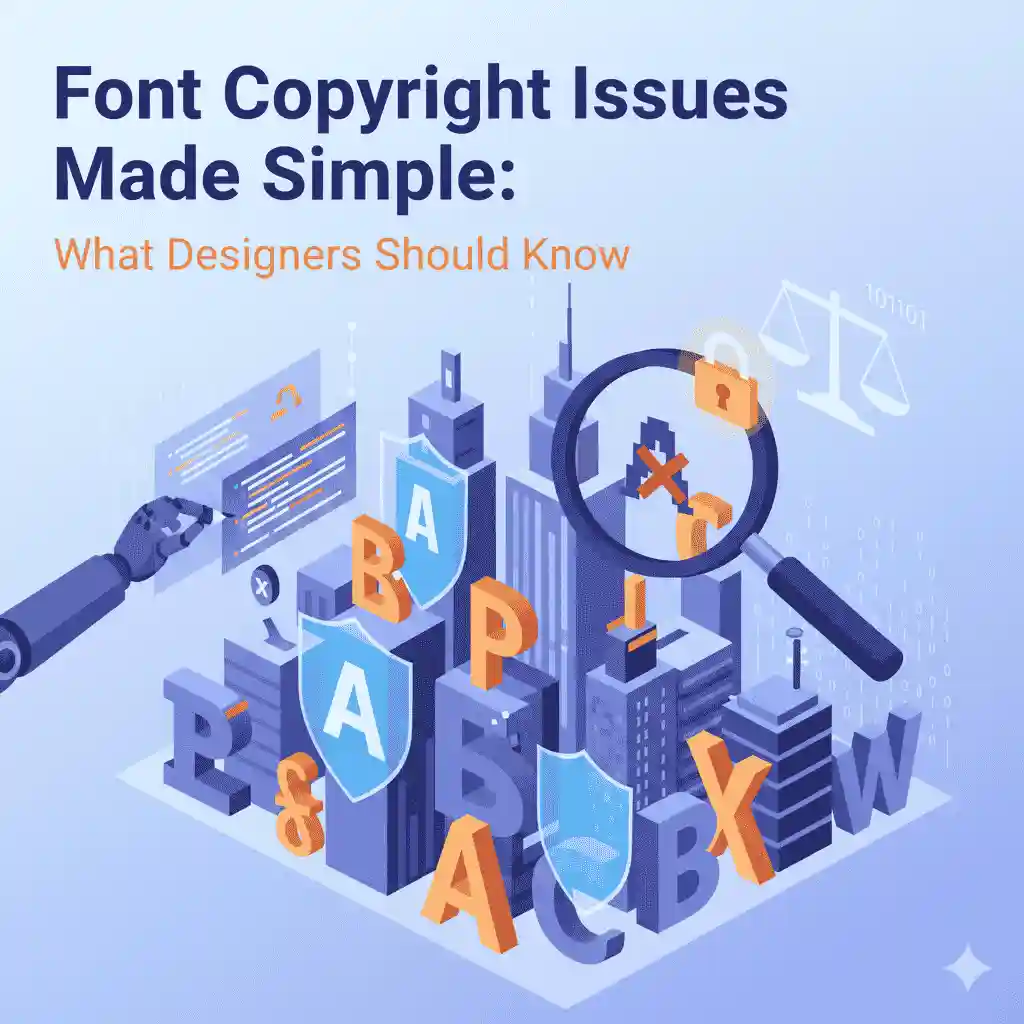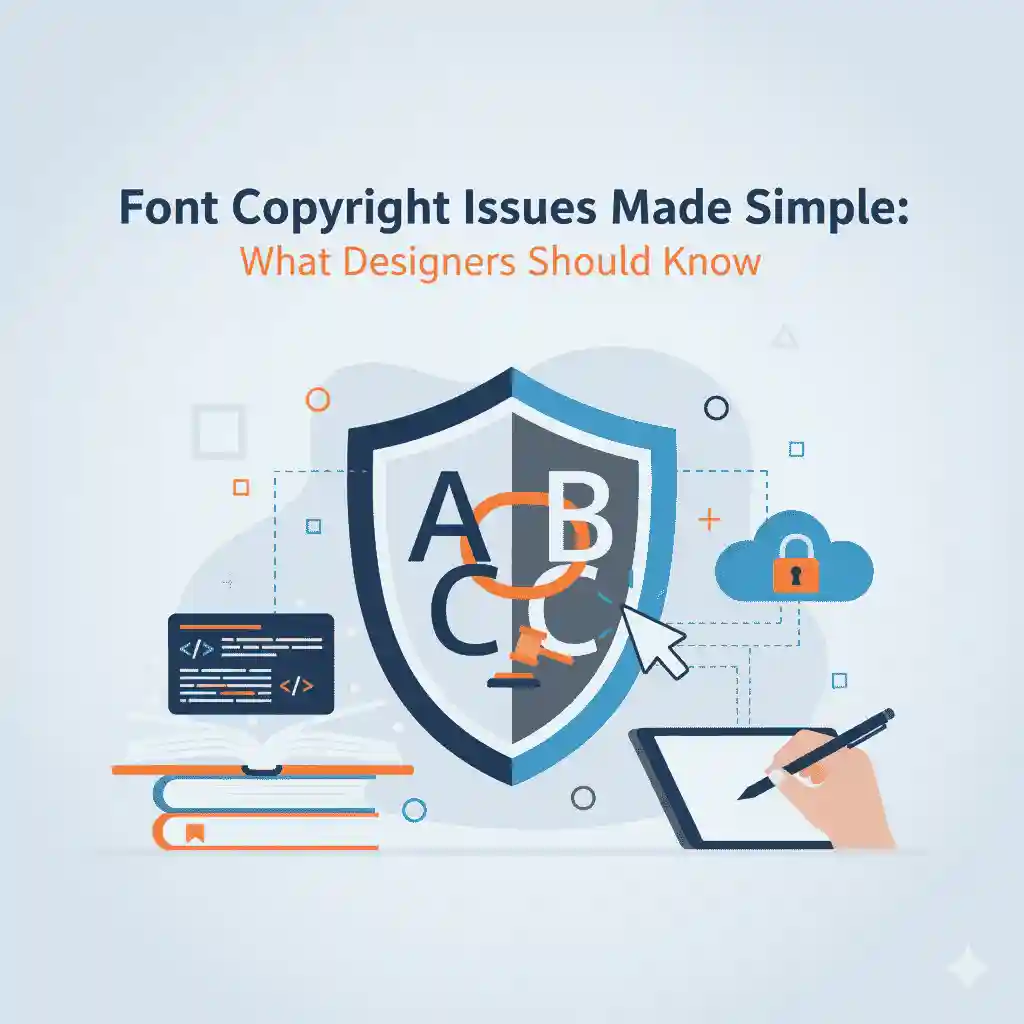Table of Contents
- Introduction: Why Font Copyright Matters
- Font vs Typeface: What’s Protected Under Copyright?
- Common Font Copyright Issues & Risks
- Unlicensed use & infringement
- Embedding & distribution
- Modifying or deriving from existing fonts
- Client sublicensing & redistribution
- How to Legally Use Fonts: Best Practices
- Always read and comply with the EULA
- Choose appropriate license types
- Use open source or royalty-free fonts
- Keep records & proof of license
- Case Studies & Legal Precedents
- How Foundries Enforce Rights & What Happens When You Violate
- Tips for Font Sellers (like your team) to Minimize Risk
- Clear licensing terms
- Digital protections / watermarking
- Monitoring misuse
- Educating your customers
- Conclusion & Action Steps
- References & Further Reading
1. Introduction: Why Font Copyright Matters

Fonts may appear to be simple design assets, but behind every font file is intellectual property that must be respected. Ignoring font copyright issues can lead to legal threats, settlements, or in rare cases, lawsuits. For designers, clients, and font sellers alike, being clear on rights, licenses, and usage boundaries is essential.
In this article, we’ll dive deep into what “font copyright issues” entail, how they differ by jurisdiction, how to avoid trouble, and how font foundries enforce their claims.
2. Font vs Typeface: What’s Protected Under Copyright?
A frequent source of confusion is the difference between typeface and font, and which of those is actually protected under copyright law.
- A typeface is the design or artistic shape of the characters (the visual style).
- A font is the digital file (or software) that implements and draws those characters (e.g., TTF, OTF).
In many jurisdictions (especially the U.S.), typeface shapes are not eligible for copyright, because they are considered utilitarian. However, font files (the software or code) are often protected as a computer program. Wikipedia Intentionally Designed
In other countries, typefaces may be protected under design law, industrial design, or copyright depending on local statute. Wikipedia
Additionally, font names may be protected under trademark law, so even if you recreate a font, you cannot necessarily call it the same name. Wikipedia Quarles
3. Common Font Copyright Issues & Risks

Here are the main copyright / licensing pitfalls people encounter:
Unlicensed Use & Infringement
Using a font without a valid license or beyond the scope granted by its EULA is the most common violation. Font owners can claim actual damages, lost license fees, or, in some jurisdictions, statutory damages (e.g. between $750 to $30,000 per infringed work, or up to $150,000 if willful) ALCOHOL LAW ADVISOR
Some foundries actively scan websites or design works to detect unauthorized usage and send cease-and-desist or payment demands. ALCOHOL LAW ADVISOR Communication Arts
Embedding & Distribution
Embedding fonts in documents (PDFs, eBooks) or distributing them via software or web can violate licensing terms unless explicitly allowed in the EULA. Some license types restrict embedding or web usage. Intentionally Designed Monotype
Modifying or Deriving Fonts
Altering or creating derivative fonts (slight changes, extensions, etc.) is also risky unless the license allows it. Many EULAs forbid reverse engineering or modification. Monotype Communication Arts
Client Sublicensing & Redistribution
Designers sometimes give font files to their clients or embed them in a package. Unless the EULA explicitly allows redistribution or sublicensing, that is a violation. crowdspring
4. How to Legally Use Fonts: Best Practices

Here are practical steps to reduce risk:
Always Read and Comply with the EULA
Even if you purchased the font, the EULA (End User License Agreement) governs exactly what you can and cannot do. Terms vary greatly between fonts.
Choose Appropriate License Types
Fonts are often licensed in different tiers (desktop, web, app, ePub, broadcast, etc.). Make sure you choose the license that matches your intended use.
Use Open Source or Royalty-Free Fonts Wisely
Fonts under open licenses (e.g. SIL Open Font License) allow embedding, modification, and free use under certain conditions. Wikipedia
However, even “free” fonts can have restrictions (e.g. for commercial use) or may actually be illegal copies marketed as free. crowdspring Intentionally Designed
Keep Records & Proof of License
Store your purchase receipts, license text, and usage evidence. If a dispute arises, these materials can help prove you had legitimate rights.
5. Case Studies & Legal Precedents
- Adobe Systems, Inc. v. Southern Software, Inc.
In this U.S. case, Adobe successfully argued that its font software was protectable expression, and that Southern Software’s font was substantially similar and infringing. Wikipedia - NBCUniversal & multiple foundries
NBCUniversal was sued by multiple font foundries (Font Bureau, P22) for using fonts beyond their licensed scope in merchandise and promotional materials. Extensis - Haribo case
Haribo faced claims of font license violation for using a font beyond the agreed desktop use in packaging. Extensis
These examples illustrate serious financial stakes and show how seemingly small license violations can escalate.
6. How Foundries Enforce Rights & What Happens On Violation
Foundries typically follow these steps:
- Detection / monitoring — using automated tools or manual review to find misuse
- Cease & desist / demand letter — asking the user to remove the font or pay a license
- Negotiation / settlement — many cases settle out of court
- Litigation (rare) — for large or willful infringements, they may sue
Most cases never make headlines; many settle quietly. Communication Arts Extensis
If you lose or settle, you could be required to pay damages, license fees, legal costs, and remove offending works.
7. Tips for Font Sellers (Like Your Team) to Minimize Risk & Build Trust
Since you design, produce, and sell fonts, here are practices you can adopt:
- Clear and transparent licensing terms
Provide EULAs in plain language, explain permitted uses, and highlight restrictions. - Offer multiple license tiers
E.g. desktop, web, app, ePub, broadcast — let customers pick what fits them. - Digital protections & watermarking
Use unique identifiers, license keys, or embedded metadata in font files. - Use licensing management platforms
Automate tracking, enforcement, and renewal. - Monitor misuse
Use web crawlers, reverse image search, or Google search to find unauthorized usage. - Educate your customers
Include a blog post (like this) or FAQ about “font copyright issues” so users understand what’s allowed and what’s not. - Link to your font products
When discussing certain license types or examples, you can point readers to your relevant offerings. For instance: “If you’re building a website and need a font that supports web embedding with license, check out our Ekstra Ordinary Font.”“For designers needing a versatile collection.” Including product links helps readers and may also reinforce your authority.
8. Conclusion & Action Steps
Font copyright issues may seem complex, but with diligence and clarity, you can navigate them safely. Here’s a quick checklist to act upon:
- Always read the EULA before using or distributing a font
- Choose the proper license for your usage scenario
- Keep proof of license and usage
- For font sellers: provide clear licensing, protect your files, and monitor misuse
- Educate your clients or users about font copyright
By respecting intellectual property and using fonts legally, you protect yourself, your clients, and your business (like EdricStudio). You also help foster a healthier ecosystem for typographers and creators.
9. References & Further Reading
- The Font Files: When Piracy and Noncompliance Lead to Font Lawsuits — Extensis Extensis
- Font Licensing Explained for Designers and Brands — Monotype Monotype
- Fonts and the Law — Communication Arts Communication Arts
- Intellectual Property Protection of Typefaces — Wikipedia Wikipedia
- The Fine Print: Avoiding IP Pitfalls in Unlicensed Fonts — legal commentary ALCOHOL LAW ADVISOR
- SIL Open Font License Wikipedia